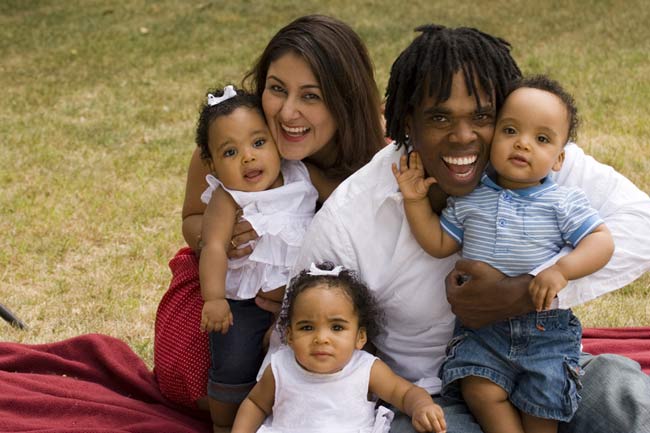The Perfect Family Is a Myth

There's something "right" about a nuclear family, or so we think. Family, we're taught by culture and religion, "should" be composed of a mother, father and at least two kids, preferably one of each sex. That ideal was recently underscored by the report of a 4,600-year-old mass grave in Germany containing thirteen individuals, many of them children. Poignantly, some adults were buried facing each other, with their arms entwined. But even more poignant, scientists from the University of Bristol and University of Adelaide used DNA analysis to link one couple with their two children, the oldest evidence of a nuclear family. This report tugs at our heart strings because it fits with what our culture has embraced as the definition of a family. As such, those bodies laid to rest together seem to confirm that the nuclear family is an ancient, and therefore evolutionarily selected, "natural" human grouping. But that bias toward focusing on the four related bodies ignores the other nine people in that grave, none of which were apparently related. Their presence also underscores the fact that our ideas of the perfect family are narrow, and just plain inaccurate. Across cultures, people live in all sorts of family groups. Polygyny, when one many has more than one wife, and all the wives and their children live in close proximity, is the most common type of family, although only wealthy men or men with power have multiple wives. In Bali, I once spent a few months at a house compound that included a man, his two wives, and various children of various ages, as well as a bunch of tourists out back. In some cultures, women have several husbands, or they have sex with several men. Throughout South America, men and women in various cultures believe that a child can have several fathers because the mother had sex with more than one man during her pregnancy. And for the Mosuo, a culture in China, people live in large extended families where women, not men, are in charge. Fathers are not even part of the household. Instead, men come and go at night and belong to their mother's family. There is also no real evidence that the nuclear family as we know it today has been around very long. Anthropologists have speculated that the original family of our long ago hominid past was probably groups of sisters and a few hangers-on males, and that cooperative childcare from female relatives was probably more important than love between a man and a woman. Even today in Western culture, the nuclear family is rare. Although more than two-thirds of American kids are living with two parents, nine percent live with a single parent. And more than one-quarter of Americans live alone. But that's not to say we all don’t belong to a family of some sort. We might have grown children across the country or step brothers and sisters down the block. We might have a stepdad in the house and another dad across town. Or grandparents might be in charge. The thirteen bodies in that German grave are there not because they are a family per se, but because they were important to each other, connected in some way, either economically or emotionally, because that's really what people do. We don’t always form nuclear families in the ideal way, but we do make families of a different order all the time, because it's human nature to be together.
- Video – A Mother’s Touch
- 10 Worst Hereditary Conditions
- The Sex Quiz
Meredith F. Small is an anthropologist at Cornell University. She is also the author of "Our Babies, Ourselves; How Biology and Culture Shape the Way We Parent" (link) and "The Culture of Our Discontent; Beyond the Medical Model of Mental Illness" (link).
Get the world’s most fascinating discoveries delivered straight to your inbox.


